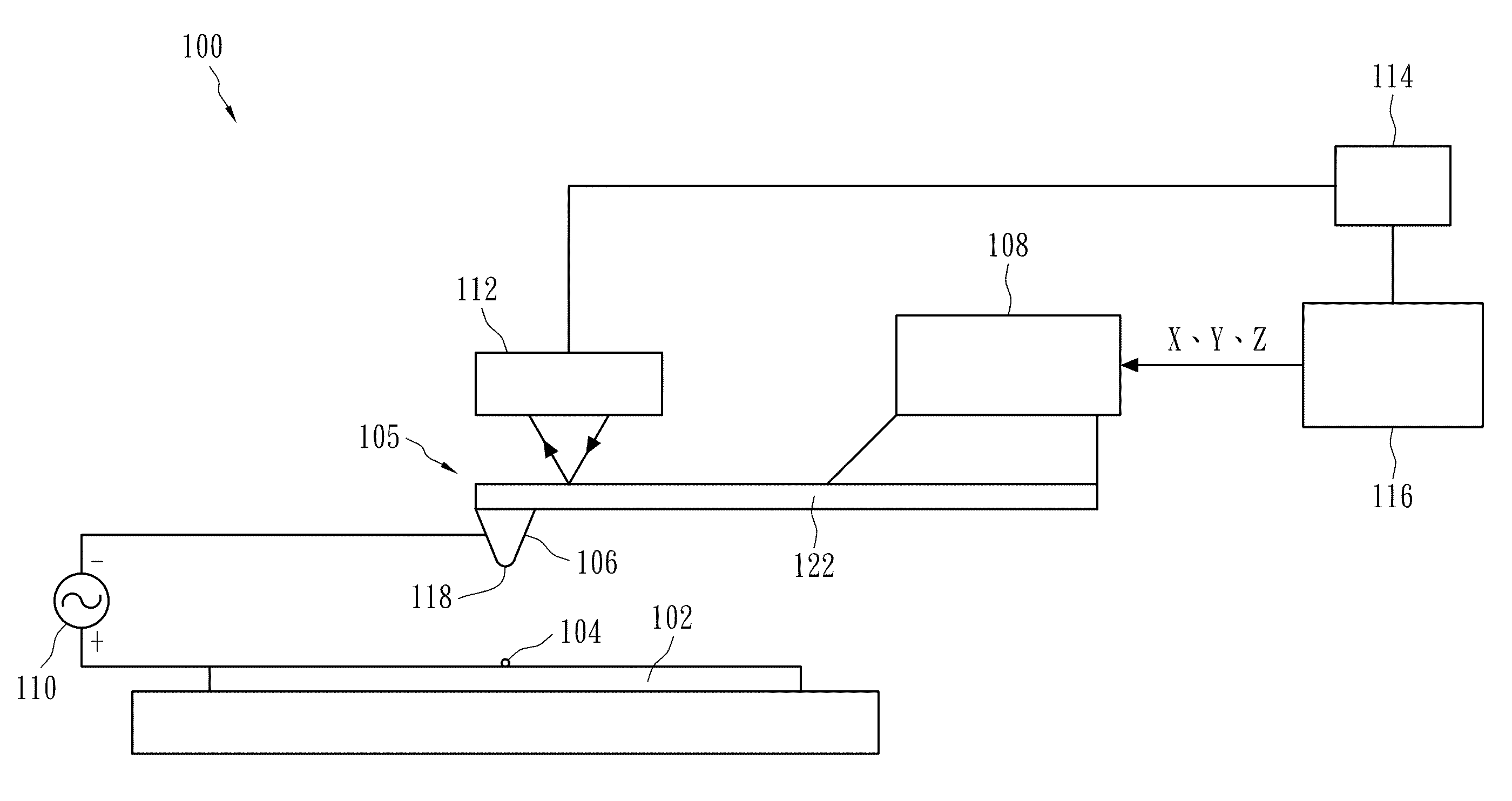Scanning probe and method for attaching conductive particle to the apex of the probe tip of the scanning probe
a scanning probe and conductive particle technology, applied in the field of scanning probes and methods, can solve the problems of increasing the cross sectional area and the surface roughness of the scanning probe tip, difficult control, and inconvenient application of the method, so as to achieve the effect of correctly and accurately attaching a conductive particle to the apex and no expensive equipmen
- Summary
- Abstract
- Description
- Claims
- Application Information
AI Technical Summary
Benefits of technology
Problems solved by technology
Method used
Image
Examples
Embodiment Construction
[0021]FIG. 1 shows an apparatus 100 for firmly attaching a conductive particle to the apex of a probe tip according to one embodiment of the present invention. The apparatus 100 for firmly attaching a conductive particle to the apex of a probe tip is configured to attractively and firmly attach a conductive particle 104 placed on the surface of a conductive substrate 102 to the apex of a probe tip 106, which comprises a probe drive device 108, a waveform generator 110, an analysis circuit 114, and a controller 116. The cantilever arm 122 of the scanning probe 105 is coupled to the probe drive device 108, which is configured to make the probe tip 106 stationary and to move the probe tip 106 during a scanning process. The waveform generator 110 electrically coupled to the probe tip 106 and the conductive substrate 102 is configured to apply a bias voltage between the probe tip 106 and the conductive substrate 102 such that when a bias voltage is applied between the probe tip 106 and t...
PUM
 Login to View More
Login to View More Abstract
Description
Claims
Application Information
 Login to View More
Login to View More - R&D
- Intellectual Property
- Life Sciences
- Materials
- Tech Scout
- Unparalleled Data Quality
- Higher Quality Content
- 60% Fewer Hallucinations
Browse by: Latest US Patents, China's latest patents, Technical Efficacy Thesaurus, Application Domain, Technology Topic, Popular Technical Reports.
© 2025 PatSnap. All rights reserved.Legal|Privacy policy|Modern Slavery Act Transparency Statement|Sitemap|About US| Contact US: help@patsnap.com



